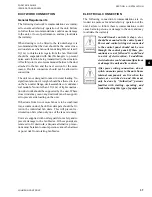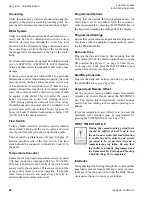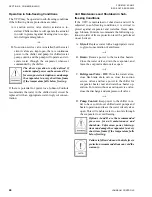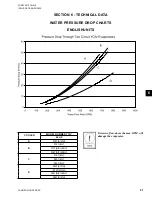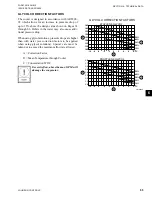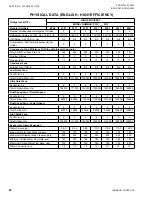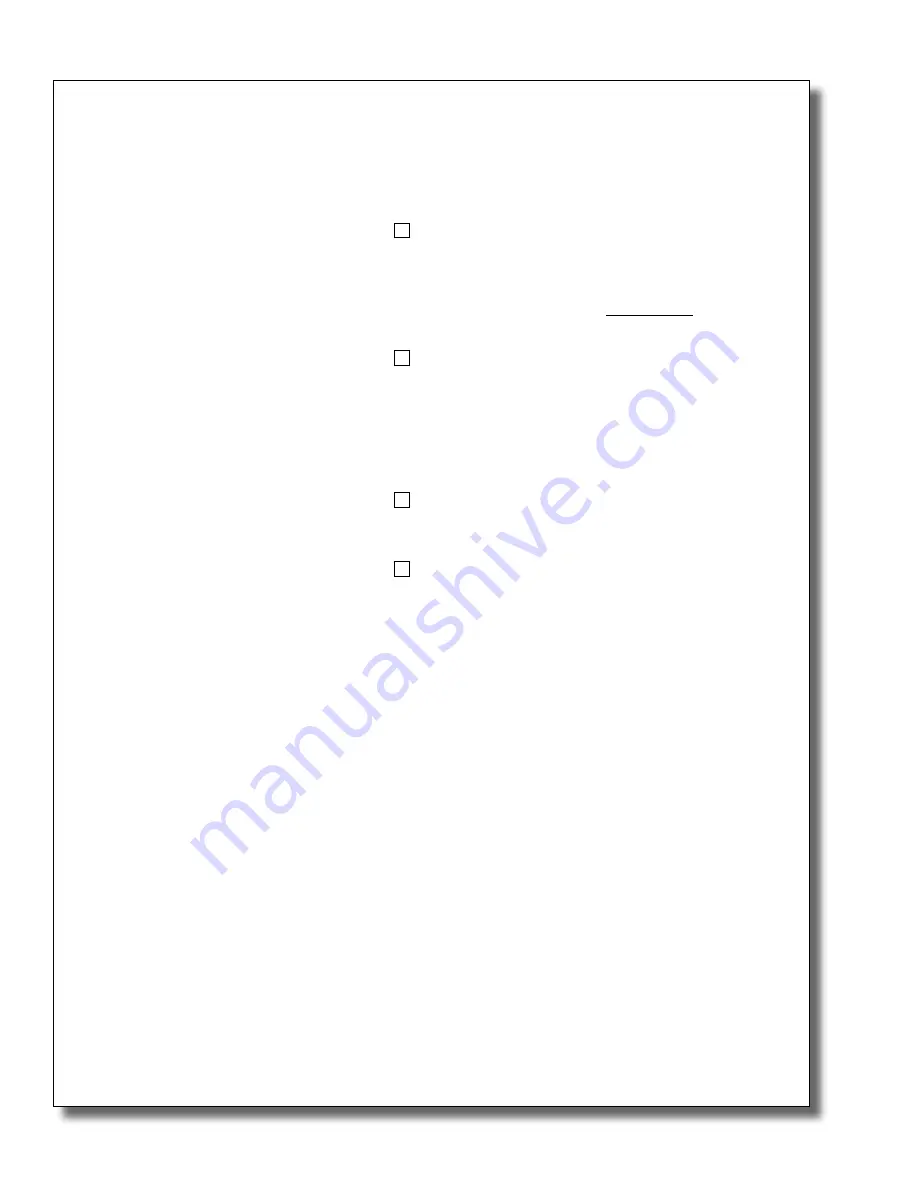
JOHNSON CONTROLS
48
FORM 201.23-NM2
ISSUE DATE: 09/25/2020
SECTION 5 - COMMISSIONING
JOHNSON CONTROLS
4
FORM 201.23-CL2
ISSUE DATE: 1/12/2015
E. INITIAL START-UP
After the control panel has been programmed and the com-
pressor heaters have been energized for at least 8 hours
(ambient temperature more than 96ºF (36ºC)) or 24 hours
(ambient temperature less than 86ºF (30ºC)), the chiller may
be placed in operation.
1. Turn on the UNIT switch and program the system
switches on the keypad to the “ON” position. .........
2. If cooling demand permits, the compressor(s) will
start and a flow of refrigerant will be noted in the
sight glass, after the anti recycle timer times out
and the precharge of the DC Bus is completed.
After several minutes of operation, the bubbles in
the sight glass will disappear and there will be a
solid column of liquid when the Drain and Feed
Valves stabilize the flash tank level. ........................
3. Allow the compressor to run a short time, being
ready to stop it immediately if any unusual noise
or adverse conditions develop. Immediately at
start-up, the compressor may make sounds differ-
ent from its normal high-pitched sound. This is due
to the compressor coming up to speed and the
initial lack of an oil film sealing the clearances in
the rotors. This should be of no concern and lasts
for only a short time. ...............................................
4. Check the system operating parameters. Do this
by selecting various displays such as pressures
and temperatures. Compare these to test gauge
readings. .................................................................
F. CHECKING SUBCOOLING AND SUPERHEAT
The subcooling should always be checked when charging
the system with refrigerant and/or before checking the super-
heat. The subcooling measurement should always be taken
with the system loaded, the economizer solenoid energized,
and the level in the flash tank reasonably stable with a level
of approximately 35%.
Note:
It may be desirable to check subcooling with one com-
pressor running to allow the compressor to operate at full
speed for a period of time to stabilize system temperatures
and pressures.
When the refrigerant charge is correct, there will be no bub-
bles in the liquid sight glass with the system operating under
full load conditions, and there will be 5 to 7°F (2.77 to 3.78°C)
subcooled liquid leaving the condenser. Subcooling should
be set at 10°F (5.56°C). An overcharged system should be
guarded against. Evidence of overcharge is as follows:
a. If a system is overcharged, the discharge
pressure will be higher than normal. Normal
discharge/condensing pressure can be found in
the refrigerant temperature/pressure chart; use
entering air temperature plus 30°F (17°C) for
normal condensing temperature.
b. The temperature of the liquid refrigerant out of
the condenser should be about 5 to 7°F
(2.77
to
3.78°C)
less than the condensing temperature
(The temperature corresponding to the con-
densing pressure from the refrigerant tempera-
ture/pressure chart).
The subcooling temperature of each system should be cal-
culated by recording the temperature of the liquid line at the
outlet of the condenser and subtracting it from the recorded
liquid line pressure at the liquid stop valve, converted to tem-
perature from the temperature/pressure chart.
Subcooling
Example:
Liquid line pressure =
110 PSIG converted to 93°F (33.9°C)
Minus liquid line temp. -87°F (30.6°C)
Subcooling = 6°F (3.3°C)
The subcooling should be adjusted between 5 and 7 °F
(2.77 and 3.78°C)
NOTE:
This may be difficult to measure, due to test instru
-
ment error and the difficulty generally encountered when
measuring subcooling on systems operating with very low
condenser subcooling.
Record the liquid line pressure and it’s corresponding tem-
perature, liquid line temperature, and subcooling below:
SYS 1
SYS 2
Liq Line Press = _____
_____
PSIG (kPa)
Temp =
_____
_____
°F (°C)
Liq Line Temp = _____
_____
°F (°C)
Subcooling =
_____
_____
°F (°C)
Add or remove charge as necessary to obtain a full sight
glass fully loaded while keeping subcooling to about 5 to
7°F (2.77 to 3.78°C). After an adjustment is made to the
charge, the flash tank level may rise or drop from the ap
-
prox. 35% point. Before another measurement is made,
allow the level to stabilize.
After the subcooling is set, the suction superheat should
be checked. The superheat should be checked only after
steady state operation of the chiller has been established,
and the system is running in a fully loaded, stable condition.
Correct superheat for a system is between 8 and 12°F (4.45
and 6.67°C) and should be reasonably close to the system
superheat on the chiller display.
The superheat is calculated as the difference between the
actual temperature of the returned refrigerant gas in the
suction line entering the compressor and the temperature
corresponding to the suction pressure as shown in a stan-
dard pressure/temperature chart.
Summary of Contents for YCIV Series
Page 14: ...JOHNSON CONTROLS 14 FORM 201 23 NM2 ISSUE DATE 09 25 2020 THIS PAGE INTENTIONALLY LEFT BLANK...
Page 32: ...JOHNSON CONTROLS 32 FORM 201 23 NM2 ISSUE DATE 09 25 2020 THIS PAGE INTENTIONALLY LEFT BLANK...
Page 40: ...JOHNSON CONTROLS 40 FORM 201 23 NM2 ISSUE DATE 09 25 2020 THIS PAGE INTENTIONALLY LEFT BLANK...
Page 50: ...JOHNSON CONTROLS 50 FORM 201 23 NM2 ISSUE DATE 09 25 2020 THIS PAGE INTENTIONALLY LEFT BLANK...
Page 325: ...JOHNSON CONTROLS 325 FORM 201 23 NM2 ISSUE DATE 09 25 2020 NOTES...




